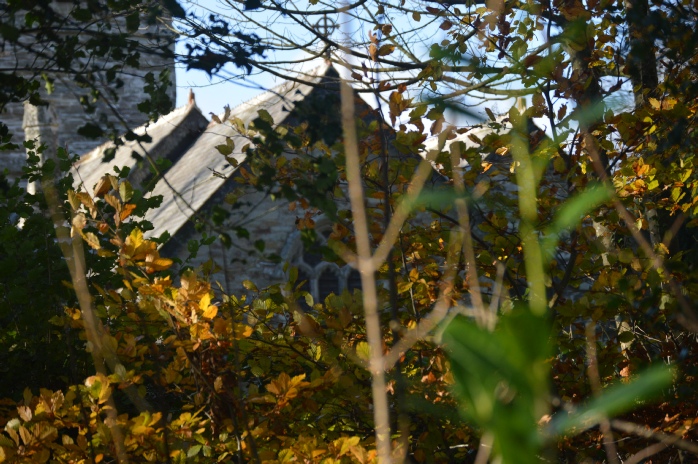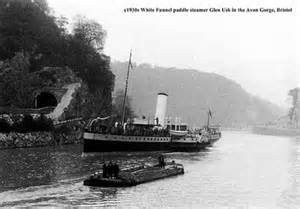

Founded by William, Earl of Gloucester, for the Augustinian Canons Regular around 1170 and survived until 1539. The remains have been designated as a Grade I listed building and Scheduled Ancient Monument
The abbey was founded following the dying wish of William's son Robert, although there had been a religious settlement in Keynsham during the 9th and 10th centuries.
After the dissolution in 1539, when the abbey and its possessions were surrendered to Henry VIII, the site was occupied by a house built by the Bridges family. In 1559 Thomas Bridges bequeathed stone from the late Abbey Church for the repair of the Bridge and causeway over the nearby River Avon. The house built by the Bridges family was demolished in 1776.
The arms of the abbey included six golden clarions or trumpets on a red ground, from the de Clares, Earls of Gloucester.
The site was excavated during the building of the Keynsham bypass in the 1960s.
Amongst the finds was a fipple flute, a type of early recorder.

Brychan – father of keyna ?
Listed in the Life of Saint Nectan are, by his wife, Gwladys:
Adwen, Canauc (Cynog), Cleder (Clether), Dilic (Illick), Endelient (Endelienta), Helie, Johannes (Sion), Iona, Juliana (Ilud), Kenhender (Cynidr), Keri (Curig), Mabon (Mabyn), Menfre (Menefrewy), Merewenne (Marwenna), Morewenna (Morwenna), Nectanus (Nectan), Tamalanc, Tedda (Tetha), Wencu (Gwencuff, Gwengustle, name of Saint Nennocha), Wenheden (Enoder), Wenna (Gwen), Wensent, Wynup (Gwenabwy) and Yse (Issey).
According to Robert Hunt, of the holy children that settled in Cornwall, we learn that the following gave their names to Cornish churches
Johannes at St Ive
Endelient at St Endellion
Menfre at St Minver
Tedda at St Teath
Mabon at St Mabyn
Merewenne at Marhamchurch
Wenna at St Wenn
Keyne at St Keyne
Yse at St Issey
Morewenna at Morwenstow
Cleder at St Clether
Keri at Egloskerry
Helie at Egloshayle
Adwen at Advent
Lanent at Lelant
Numerous dedications to Saint Keyne exist in areas as diverse as South Wales, Anglesey, Somerset, Hertfordshire, and Cornwall.
The only literary source on the life of Saint Keyne is the Vita Sanctae Keynae, which was edited by John of Tynemouth and included in his Sanctilogium Angliae Walliae Scotiae et Hiberniae in the 14th century.[7] Unfortunately, this account is probably not trustworthy, as it was recorded nearly 800 years after her death. No other contemporary sources about her or her life have survived.
The Well of St. Keyne; by Thomas Creswick
Keyne was one of the 12 daughters of the Welsh king King Brychan of Brycheiniog in what is now South Wales (A different source, De Situ Brecheniauc, says that he actually had 24 daughters, all of whom were saints).
Although she was a great beauty and received many offers of marriage, Keyne took a vow of virginity and pursued a religious life (hence her Welsh name, Cain Wyry, or Keyne the Maiden).[7] Her vita reports that she traveled widely, and is said to have founded several oratories, including Llangeinor in mid Glamorgan, Llangunnor and Llangain in Dyfed, and Rockfield (Llangennon) in Runston, Gwent.[4] Eventually she is said to have crossed the Severn into Cornwall, where she resided as a hermitess for many years. The village of St Keyne in Cornwall, is named after her, and is the site of a church and a holy well which also takes her name.
Around 490, she is alleged to have visited her nephew Saint Cadoc at St Michael's Mount.[4] Cadoc persuaded her to return to Wales, and healing spring marked the location where she settled and eventually died. She died a virgin on 5 October in either 490 or 505. Llangeinor in Glamorgan has been proposed as a likely spot, as an ancient well is situated there, which is still said to have healing properties.
Legacy
Saint Keyne's feast is celebrated on 8 October, although it is also recorded as 30 September. She was the original patron saint of what is now St Martin-
Some sources credit her as the patron saint of Keynsham in Somerset, where she is said to resided near the banks of the Avon, which was swarming with serpents and uninhabitable. After Saint Keyne issued a fervent prayer, the serpents were transformed to stone, and the area became habitable.
(Today, these are considered to be the fossilized remains of ammonites). However, a similar miracle is also attributed to St. Hilda, and it has been suggested that Keynsham instead takes its name from "Ceagin's (Caega) Hamm."
Interpretations
The Edwardian scholar G.H. Doble found it hard to accept that a woman could have traveled so far or founded so many settlements, and therefore she "quite may well have been a man." He believed that the journeyings were more in character with male saints from this period, a sentiment which was shared by the scholar Alban Butler, who believed a number of female saints had actually been men. This view has been challenged by scholars such as Jane Cartwright, who states that this is indicative of a school of thought in which male saints are much more likely to be real historical figures than female saints, and that maleness alone is greater evidence of historicity than femaleness.
St. Keyne's well
The holy well of Saint Keyne is located about 0.8 kilometres (0.5 mi) southeast of St. Keyne's Church in Cornwall, and is now in a small housing made of dressed granite. The original housing was built in the 16th century, it was rebuilt in 1936 after the adjoining lane was widened.
The plaque next to the well describes the spell which Saint Keyne is said to have cast upon the water of the well. The plaque reads: "The legend of Saint Keyne Well. Saint Keyne was a princess who lived about 600 AD. She laid on the waters of this well a spell thus described by Richard Carew in 1602 AD—'The quality that man or wife / Whom chance or choice attaines / First of this sacred stream to drinke / Thereby the mastery gains.'"
In Victorian times the well had the reputation of conferring supremacy to the marriage partner who first tasted it. There is also a ballad called The Well of St Keyne[12] written by Robert Southey; it is set to an adaptation of the air of the Helston Furry Dance.
St Ceinwen's Church, Cerrigceinwen – a church in Anglesey dedicated to her
References
"St. Keyne". Catholic Online. Retrieved 1 January 2020.
"Author tries to reduce confusion over pronunciation of Cornish place names". Somerset County Gazette. 23 August 2003. Retrieved 1 January 2020.
J. Meyrick A Pilgrim's Guide to the Holy Wells of Cornwall, pp. 68–69
Ray Spencer A Guide to the Saints of Wales and the Westcountry, pp. 51–52
David Hugh Farmer Oxford English Dictionary of Saints
Cartwright, Jane (2008). Feminine Sanctity and Spirituality in Medieval Wales. Cardiff: University of Wales Press. p. 68. ISBN 9780708319994. Retrieved 10 June 2015.
Farmer, general consultant ed.: David Hugh (1996). Butler's lives of the Saints (1. publ. ed.). Tunbridge Wells: Burns & Oates. ISBN 086012259X. Retrieved 10 June 2015.
"The Well of St. Keyne", Poemhunter
Ford, David Nash. "St. Keyne Wyry". David Nash Ford's Early British Kingdoms. Retrieved 10 June 2015.
Farmer, David Hugh (2011). The Oxford dictionary of saints (5th ed. Rev. ed.). Oxford: Oxford University Press. p. 255. ISBN 9780199596607. Retrieved 10 June 2015.
"St Keyne's Holy Well". intocornwall.com. Retrieved 10 June 2015.
"Local News". The Cornishman (86). 4 March 1880. p. 5.
MacMahon, Desmond (1939) Nelson's New National and Folk Song Book; pt. II. London: Thomas Nelson; pp. 176-
External links
Catholic Online: St. Keyne
St. Keyne Wyry
(c.AD 461-
(Welsh: Cain; Latin: Caginus; English: Keyne)
Properly called Cain, though commonly known as St. Keyne, this saintly lady had a number of popular epithets: St. Cain Wyry (the Virgin), Cain Breit (the Bright) or Ceinwen (the Fair). She was the daughter of Brychan Brycheiniog, King of Brycheiniog in South Wales, a man of many saintly children: by some accounts, twenty-
After living an austere and saintly life in Keynsham for some years, St. Keyne made a pilgrimage to Dinsol which is traditionally said to be St. Michael's Mount, but was probably St. Keyne, near St. Neots.
She gave to the Cornish people here, a well which has the wonderful property of conferring the chief domestic authority on husband or wife, whichever first, after marriage, drinks of its waters. The parish of Kenwyn near Truro is probably named after her. Keyne's nephew, St. Cadog, son of her sister, Gwladys, was surprised to find her at Dinsol and tried to persuade her to return home with him. The locals were opposed to this, but she did eventually follow him some years later. Keyne made herself a small habitation at the foot of a mountain in her native country, almost certainly at Llangeinor in Glamorgan though possibly at Llangenny in Powys. She obtained, by her prayers, a spring of water which was helpful in divers infirmities and it remains at the former still. Here she stayed for many years and finally died on 8th October AD 505, a gracious smile and a beautiful rosy colour appearing on her face. She was buried there by St. Cadog.